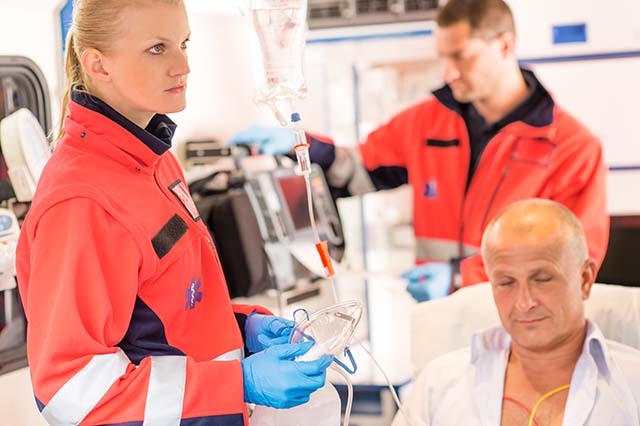
Data from the e-MUST study show that the absence of known cardiovascular risk factors is an independent risk factor for sudden cardiac arrest prior to hospital admission for ST-segment elevation myocardial infarction (STEMI). Other independent risk factors include younger age, extensive STEMI, symptoms of heart failure, and shorter intervals between symptom onset and call to the emergency medical services. Furthermore, patients who had a sudden cardiac arrest had a 10-fold higher mortality rate at hospital discharge.
Nicole Karam (Cardiovascular Epidemiology, Paris Cardiovascular Research Center, European Georges Pompidou Hospital, Paris, France) and others report in Circulation: Cardiovascular Interventions that “despite several studies”, the “real burden” and outcomes of STEMI-related prehospital sudden cardiac arrest “remain unknown”. They explain that this is because of the difficulties of identifying that a patient has experienced a STEMI (given performing an ECG in the field was not routine at the time when the studies were performed). The authors write: “In this present study, we assessed the incidence, outcome, and prognosis’ predictors of prehospital sudden cardiac arrest occurring after emergency medical services arrival in the Greater Paris Area, over an eight-year period.”
Using data from e-MUST, they identified 13,253 patients who had a STEMI between January 2006 and January 2014. Of these, 749 experienced a sudden cardiac arrest after the emergency medical services arrived but before admission to hospital. In such cases, cardiopulmonary resuscitation was immediately initiated and, if appropriate, external defibrillation was also immediately performed. The rate of mortality (at the follow-up point) was 37.7% for patients who experienced a sudden cardiac arrest vs. 4% for those who did not experience a sudden cardiac arrest (p<0.001). This meant that compared with no sudden cardiac arrest, sudden cardiac arrest was associated with a 10-fold increased risk of mortality. Of all patients admitted to hospital alive, percutaneous coronary intervention (PCI) was associated with a significant two-fold reduction in mortality.
Karam et al also reviewed the predictors of sudden cardiac arrest and found that younger age, absence of known cardiovascular risk factors, extensive myocardial infarction, overt heart failure, short delays between symptom onset and call to emergency medical services, and short delays between symptom onset and arrival of emergency medical services. They note that the finding that the absence of cardiovascular risk factors was an independent predictor for sudden cardiac arrest after STEMI “may be surprising” given that such risk factors are associated with an increased risk of STEMI. But, the authors comment: “This finding could be explained by the progressive development of collateral circulation in chronic coronary artery disease, which alleviates the consequences of an abrupt coronary artery occlusion.”
According to Karam et al, the increased risk of sudden cardiac arrest associated with a short delay between symptom onset and emergency medical services arrival “deserves specific consideration”. They observe that recent data support the concept of “rhythmic vulnerability” (i.e. an intrinsic susceptibility to develop severe ventricular arrhythmias during myocardial ischaemia), which can lead to sudden cardiac arrest “early after ischaemia onset, mainly within the first minutes”. “This rhythmic vulnerability has been well demonstrated in the past decade, with the pivotal studies providing clear evidence for a familial clustering of sudden cardiac arrest in the setting of acute myocardial ischaemia,” the authors comment.
They conclude: “Sudden cardiac arrest occurrence is associated with a 10-fold higher mortality at hospital discharge compared with STEMI without sudden cardiac arrest. Performance of PCI is the strongest survival predictor, leading to a twice-lower mortality rate. This highlights the persistently drastic impact on this STEMI complication and the major importance of PCI performance in this setting.”









